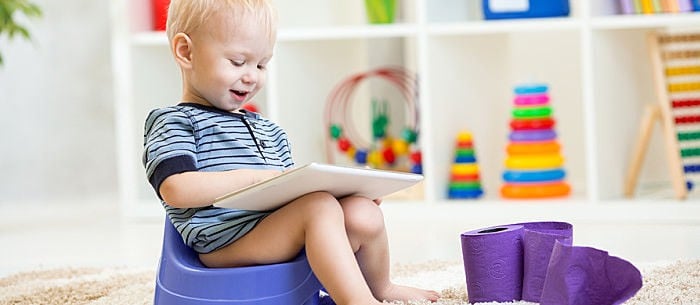There’s a lot of conflicting advice surrounding potty training, but most parents – and caregivers – agree on one thing: tracking progress encourages both you and your toddler. So what is the best visual reward system for kids learning this important skill? A potty chart!
According to the Seattle Children’s Hospital and Research foundation, a chart really can help encourage and motivate kids who are learning to go in the toilet. In fact, the benefits of a potty chart aren’t just for your child, but for you, too. Melanie Williamson, author of “The Complete Guide to Potty Training Children” says many parents lose track of how long it’s been since a voluntary (or coached) trip to the bathroom, not to mention the number of times your child has gone or attempted to go.
A chart helps you time your tot’s bathroom visits and will remind you when you may need to prompt your child to go. Your kid will be excited about the most obvious benefit: Posters, stickers and markers are awesome.
Inspiration
Before getting started, get inspired. Here are a few DIY potty charts from moms who nailed it:
- Jacinda Boneau over at Pretty Prudent noticed her child loved the concept of “big kid knickers” more than any other part of potty training, so her chart reflected that excitement.
- For another twist on the same visual reward, check out Kayci Gardner’s homemade potty chart on Keeping It Simple, which features a cookie sheet and magnet. “When they go potty they get to put on a fun magnet, and when the chart is filled they get a prize,” she says.
- You can check out other templates that will get your creative juices moving. Ask your child to pick his favorite, or mix and match styles and formats to fit your kid’s personality.
Ready, Set, Go
Once you’re inspired, it’s time to gather supplies to make your own. You’ll need:
- A large rectangular piece of poster board or scrapbook paper
- Colorful markers
- Ruler
- Stickers
- Printed images of your child’s favorite TV or storybook characters — ideally in happy, encouraging poses. Think double thumbs-up or high-fiving each other.
Crafting Success
First, find a prime location for your child’s chart. The best place is at eye level across from the toilet, so that your child can enjoy the colors, characters and shapes when he’s making an attempt to go. If that real estate won’t work, consider a nearby wall or in the hallway wall just outside the bathroom door so that your child is reminded throughout the day as he passes that way.
Once you’ve identified the best spot, it’s time to get to work. Make a grid of squares, and across the top of the page, label daily events horizontally. “Wake up” will be on the far left, with “After Breakfast” to the right and then “Morning Playtime” after that. Continue with events throughout the day. Young children often don’t have a good sense of time, so use triggers that already exist naturally in your child’s daily routine.
Vertically, on the left-most column, list potty-related events, like “Tried,” “Tinkled” and so on. Next, let your child decorate the border of his chart, avoiding event squares. This will build excitement for the much-anticipated day when he finally starts training and for the first time he tries to use the potty. Each time he uses the bathroom, let him add a sticker in the square that corresponds with the correct time of day and the potty task he accomplished.
Sally Neuberger, a mom of two and founder of Ready, Set, Go Potty!, says that while potty charts are fun, they cannot replace your encouragement or coaching. “When parents help children anticipate that hard work pays off — but may include some worries, fear and reluctance — they are setting the stage for competent and self-assured children who can approach new skills without the need for reinforcements, trophies and stickers,” she says. So use the potty chart as a way to celebrate your child’s journey, not a motivational tool.
What about you? Are you planning to — or did you already — make your own potty training chart to celebrate bathroom milestones? Share your tips and stories in the comments below.
Want more potty training tips? Check out these potty training strategies.
Bethany Johnson, a professional writer from Washington D.C., specializes in the quirks of family life and relationships. When she’s not writing, Bethany and her husband raise both free-range chickens and free-range children on their organic farm in the suburbs.




